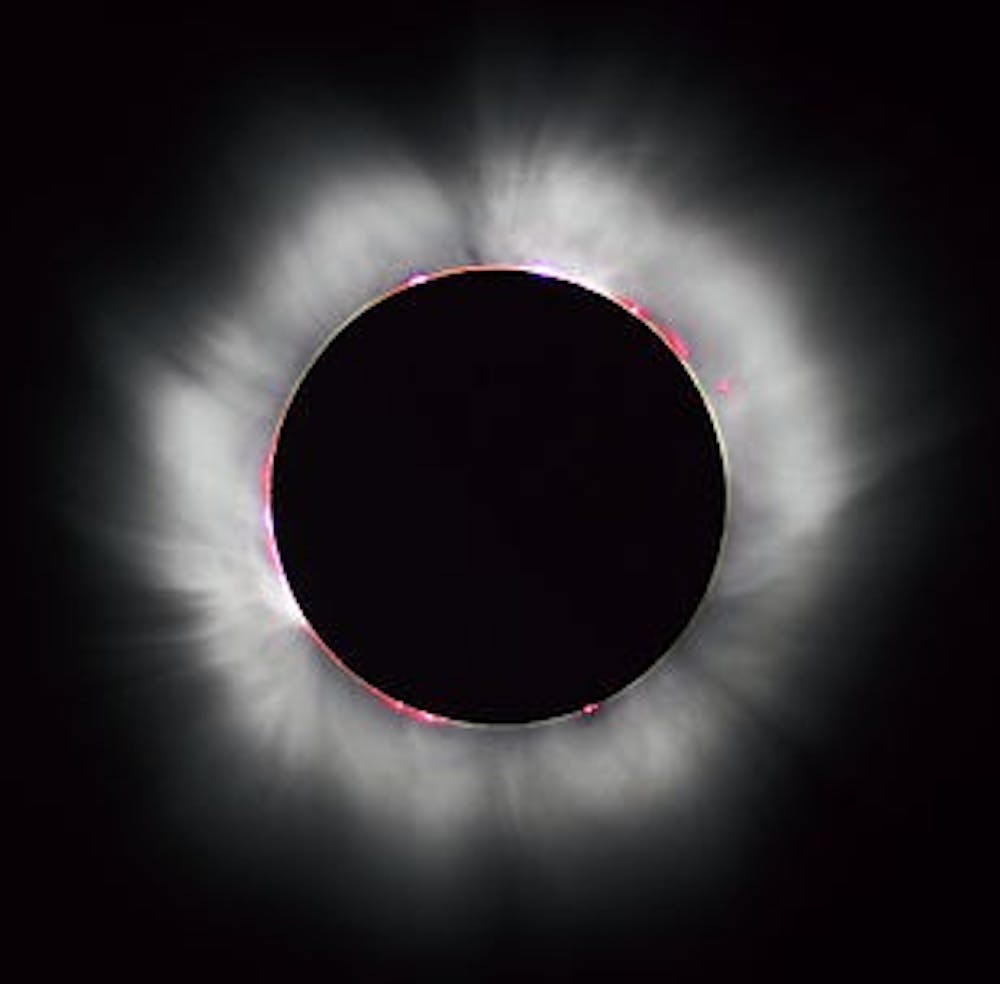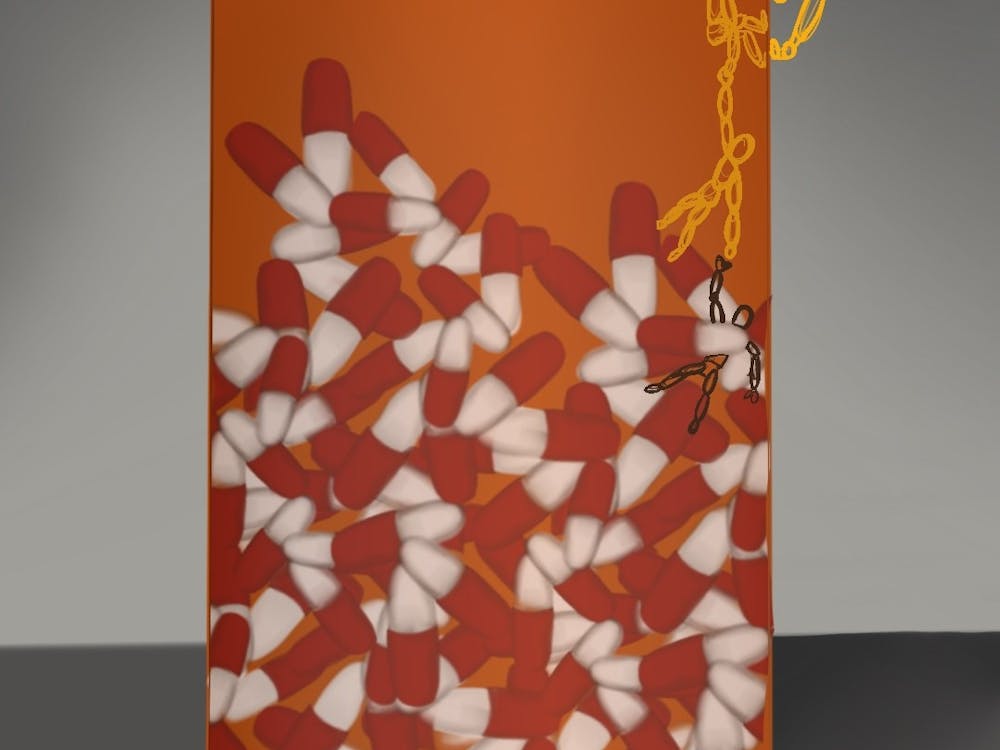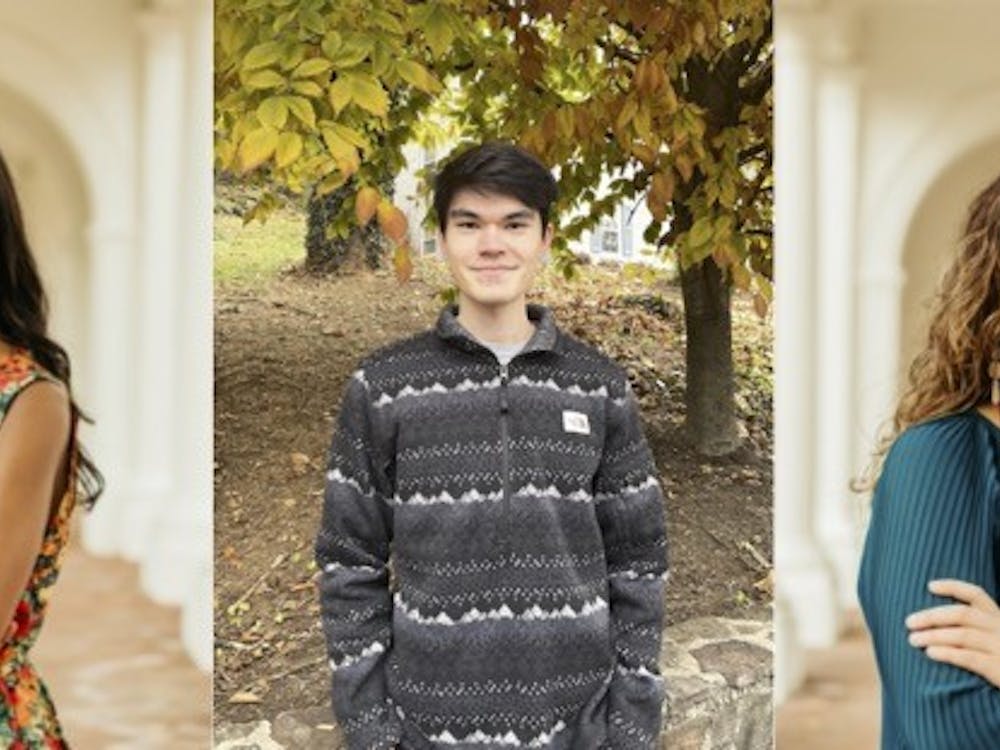On August 21 a partial solar eclipse, which occurs when the moon blocks out part of the sun, will be visible from Charlottesville.
During solar eclipses, the moon’s shadow creates a few minutes of darkness mid-day. University astronomer Ed Murphy said occurring globally approximately every 18 months, solar eclipses last for varying amounts of time and differ in appearance based on geographical location. According to Murphy, from any specific location, a total eclipse is only visible once every 375 years — in fact, the last total solar eclipse in the continental United States was in 1979.
While the eclipse on Aug. 21 will last for 2.5 minutes at most, Murphy said the maximum amount of time a total eclipse can last is 7.5 minutes. The length, he said, depends on the viewer’s position in the path of totality and the relative distances of the sun and the moon from the Earth.
According to Murphy, although the path of totality (an area along which one can see a total solar eclipse instead of partial) for most solar eclipses goes over the ocean, this year the solar eclipse will be visible in the United States from Oregon to South Carolina.
According to Matthew Pryal, a University astronomy student and teaching assistant, the shadow of the moon will move at an average speed of over 1500 miles per hour, traveling from the Northwest to Southeast coast in around 90 minutes, Pryal said.
Murphy said many people in the Astronomy department will travel near Knoxville, T.N., or to South Carolina to experience the total eclipse. He plans to travel to Columbia, S.C., to experience his third solar eclipse.
He warned that looking at the Sun during an eclipse is just as dangerous as looking at it on a regular day.
An eclipse goes through partial phases and totality — during partial phases, Murphy said that viewers must wear safe solar eye protection, not just regular sunglasses, in order to safely view the event. According to Murphy, solar glasses are vital to observing the sun unless one plans to project the image onto paper from a pinhole, which drastically reduces the grandeur of the eclipse.
Those who travel to see the eclipse in the path of totality will see the moon fully obscure the sun. During totality, which lasts just under a few minutes, protective glasses are no longer necessary, and people can fully enjoy the solar eclipse, said Murphy.
“I was completely awestruck by the awesome spectacle of the shadow racing in,” Murphy said. “Before I knew it, the moon had completely covered the sun, and it got dark (not as dark as night, but about as dark as deep twilight). The sight of the corona was beautiful.”
Amid the dark sky, Murphy said he saw a loop of gas in the Sun’s atmosphere called a prominence above the moon. Totality of the solar eclipse ended in just under four minutes when a spot of sunlight began peeking past the moon and the shadow of the moon began to disappear to the Northeast.
Although the partial solar eclipse will be viewable in Charlottesville, Murphy suggested that everyone travel to see a total solar eclipse at least once.
Pryal said he intends to travel to see his first total solar eclipse this August. According to Pryal, during solar eclipses, the passing of the moon’s shadow not only creates a chill in the air, but also lets people view stars and other planetary objects.
“Seeing a total solar eclipse should be on your ‘bucket list,’ just like seeing the Grand Canyon,” Murphy said. “The difference is that the Grand Canyon is there 24 hours a day, 365 days a year. A total solar eclipse appears somewhere in the world, once every 18 months, for just a few minutes.”







